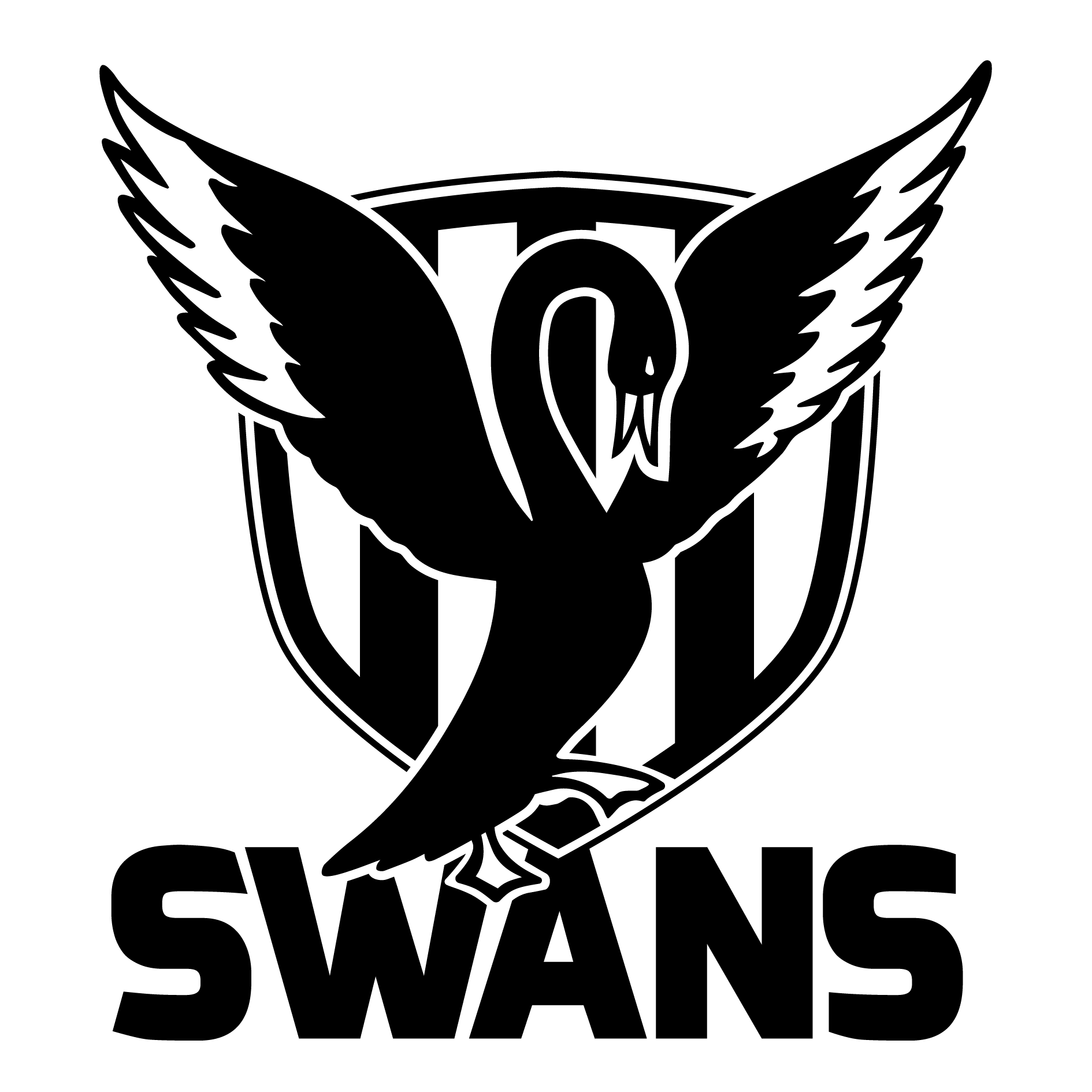Select grade below
- Round 2Sat, 12 Apr 20251:45 PM
 VS
VS Fremantle Community Bank Oval
Fremantle Community Bank Oval - Round 3Sat, 19 Apr 20252:30 PM
 VS
VS Fremantle Community Bank Oval
Fremantle Community Bank Oval - Round 4Fri, 25 Apr 20252:10 PM
 VS
VS Joondalup Arena
Joondalup Arena - Round 5Sat, 3 May 20251:40 PM
 VS
VS Fremantle Community Bank Oval
Fremantle Community Bank Oval - Round 6Sat, 10 May 20252:30 PM
 VS
VS Revo Fitness Stadium
Revo Fitness Stadium - Round 7Sat, 24 May 20252:30 PM
 VS
VS Fremantle Community Bank Oval
Fremantle Community Bank Oval - Round 8Mon, 2 Jun 20251:10 PM
 VS
VS Fremantle Community Bank Oval
Fremantle Community Bank Oval - Round 10Sat, 14 Jun 20252:30 PM
 VS
VS Fremantle Community Bank Oval
Fremantle Community Bank Oval - Round 11Sat, 21 Jun 20252:30 PM
 VS
VS Lane Group Stadium
Lane Group Stadium - Round 12Sat, 28 Jun 20252:30 PM
 VS
VS Fremantle Community Bank Oval
Fremantle Community Bank Oval - Round 13Sat, 5 Jul 20251:45 PM
 VS
VS Fremantle Community Bank Oval
Fremantle Community Bank Oval - Round 14Sat, 12 Jul 20252:30 PM
 VS
VS Steel Blue Oval
Steel Blue Oval - Round 16Sat, 26 Jul 20252:10 PM
 VS
VS Sullivan Logistics Stadium
Sullivan Logistics Stadium - Round 17Sat, 2 Aug 20251:40 PM
 VS
VS Fremantle Community Bank Oval
Fremantle Community Bank Oval - Round 18Sat, 9 Aug 20252:30 PM
 VS
VS Sullivan Logistics Stadium
Sullivan Logistics Stadium - Round 19Sat, 16 Aug 20252:30 PM
 VS
VS Fremantle Community Bank Oval
Fremantle Community Bank Oval - Round 20Sat, 23 Aug 202511:10 AM
 VS
VS Mineral Resources Park
Mineral Resources Park
Mac Chat – Andrew McCarrey column Round 5
FOOTBALL by its very nature is a source of a vast array of injuries. During the course of a career, it is near on certain that a player will suffer from some type of injury that may be short term, recurrent, long term or in some cases career ending.
There are a multitude of factors behind injuries in our game. The demands of the game itself leave players potentially vulnerable to injury.
Firstly you have the fact that football is a running sport. It involves running which is multidirectional in nature and periods of deceleration, acceleration and acute change in direction all whilst carrying and bouncing a ball. Coupled to this, a player then has to kick, often across their body or in a multitude of directions. Then you have the contact component in which players are further vulnerable to injury.
The game of football is also constantly evolving. Throughout my career spanning the last 12 years I have experienced a dramatic change in the way the game is played and the increased demands on the body as a result. One of the biggest changes has been the increased tempo and intensity. There is more emphasis nowadays on a running and carry style of play, moving the ball in waves at high speed from one end of the ground to another.
When I first started out at league level back in 2001, you saw a lot more one-on-one football, kicking the ball from contest to contest around the ground. The increased running load and intensity, coupled with more vigorous training demands, has seen a rise in the number of injuries sustained by players.
The large and varying demands of football can lead to a multitude of injuries. Some injuries are generalised, some due to individual positions played and some just bad luck! Some players may get through relatively unscathed in their careers whilst some battle ongoing recurrent problems.
Kris Miller for instance has played 282 WAFL games without missing a game from injury. Jarrod Parry on the other hand is only 21 and has missed the last two years of football due to two ACL reconstructions. His determination and commitment to his rehab should be noted and commended. He is invaluable as a positive role model for other injured players.
Genetics as well as biomechanics can play a large part in determining the likelihood of injury particularly with the running component of football. We have seen this in the pre-season with Brendon Gulley having on-going foot pain as well as surgery for Shaun Bewick and John Sgherza, both for osteitis pubis. This year we have tried to address the on-going overuse injuries in the pre-season with a progressive glute strengthening program, which all the players embraced as a potential preventative measure to reduce the incidence of injury.
We also used a screening process to try and identify at risk players that have the potential to develop injuries and have made allowances accordingly. This is something as a player that I have found very useful as it has been able to identify different management strategies for some of my injuries.
Throughout my career spanning over 10 years and over 170 games of WAFL football at two clubs, I have unfortunately been one of those players that have had their fair share of injuries. I remember back to my first major injury when it was my debut season for East Fremantle. I was 18 and yet to physically mature. I had a boy's body up against fully grown men. The game was against Subiaco in Kalgoorlie and I was running back with the flight of the ball and was collected by Subi's full forward and felt all 100kgs go straight through me.
I couldn't breathe and initially thought I was just badly winded and bruised. It wasn't until five minutes later as I was running down the wing that I passed out due to lack of oxygen. I woke up in the back of the ambulance with sirens blazing heading towards the hospital. It turns out I had five cracked ribs and a punctured lung which had totally collapsed. When I got to hospital they had to stick a tube into my lung and reinflate it. A delay of another five minutes and the doctors said I would've been dead.
Since that eventful day and initiation into the world of football injuries, I have accumulated a nice little list. To name but a few I've ruptured two vertebral discs in my spine and consequently had to have surgery to remove them. I've broken four different bones, ruptured two tendons in my fingers ( a very common injury amongst footballers ), broken my nose, had several concussions, smashed my front tooth out, and have had more stitches than I can remember.
I’ve had a frustrating start to this season, suffering from a bruised pubic bone during round one and then a fractured rib in round two. Both of these being unlucky impact injuries. Having rested for the last game against West Perth has given my body time to repair itself and I look forward to having an injury free rest of the season.
Most of my injuries sustained over the years have been a result of heavy impacts and collisions. On the other hand I have been relatively lucky with soft tissue injuries, touch wood, whereas some players may suffer from chronic soft tissue problems. For example a player may continuously tear the same hamstring over and over, something that can be extremely frustrating for them.
Although I have missed a large number of games over the years due to injury I still consider myself very lucky. I have been fortunate enough play 171 games of WAFL league football and counting. Injuries are part and parcel of playing. It is a give-and-take relationship. We must be willing to make this sacrifice in order to experience the many highs and lows our great game has to offer.
By Andrew McCarrey











